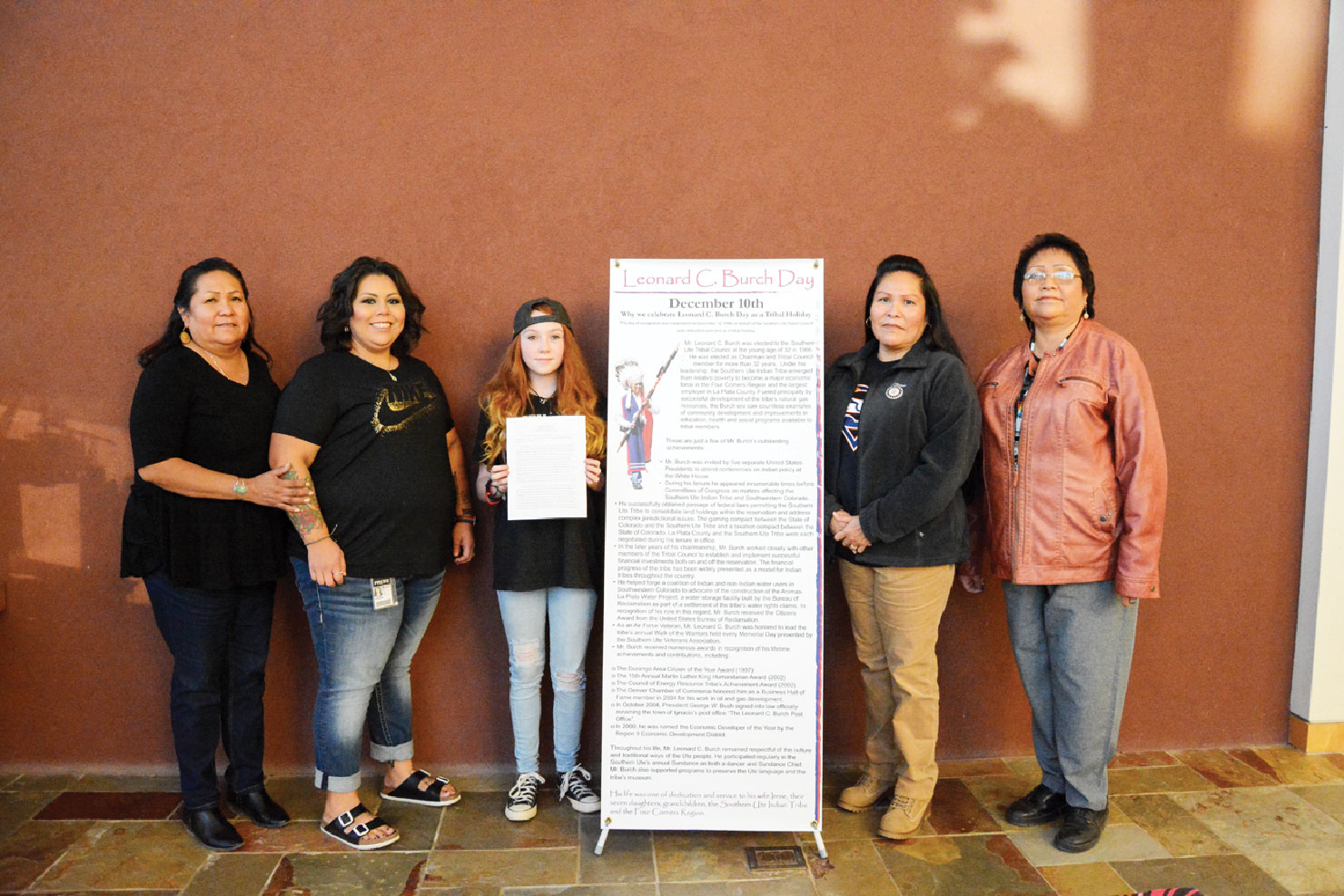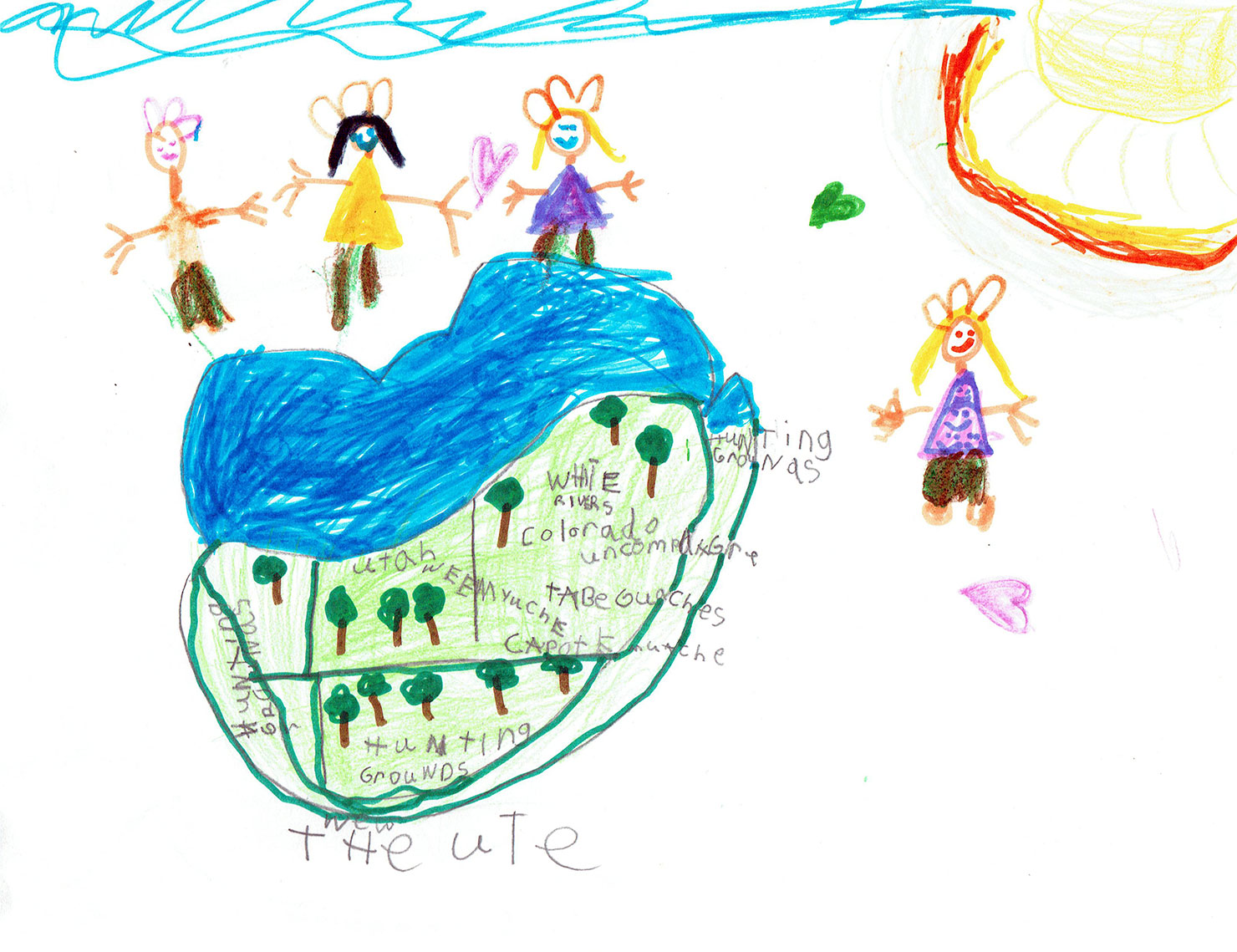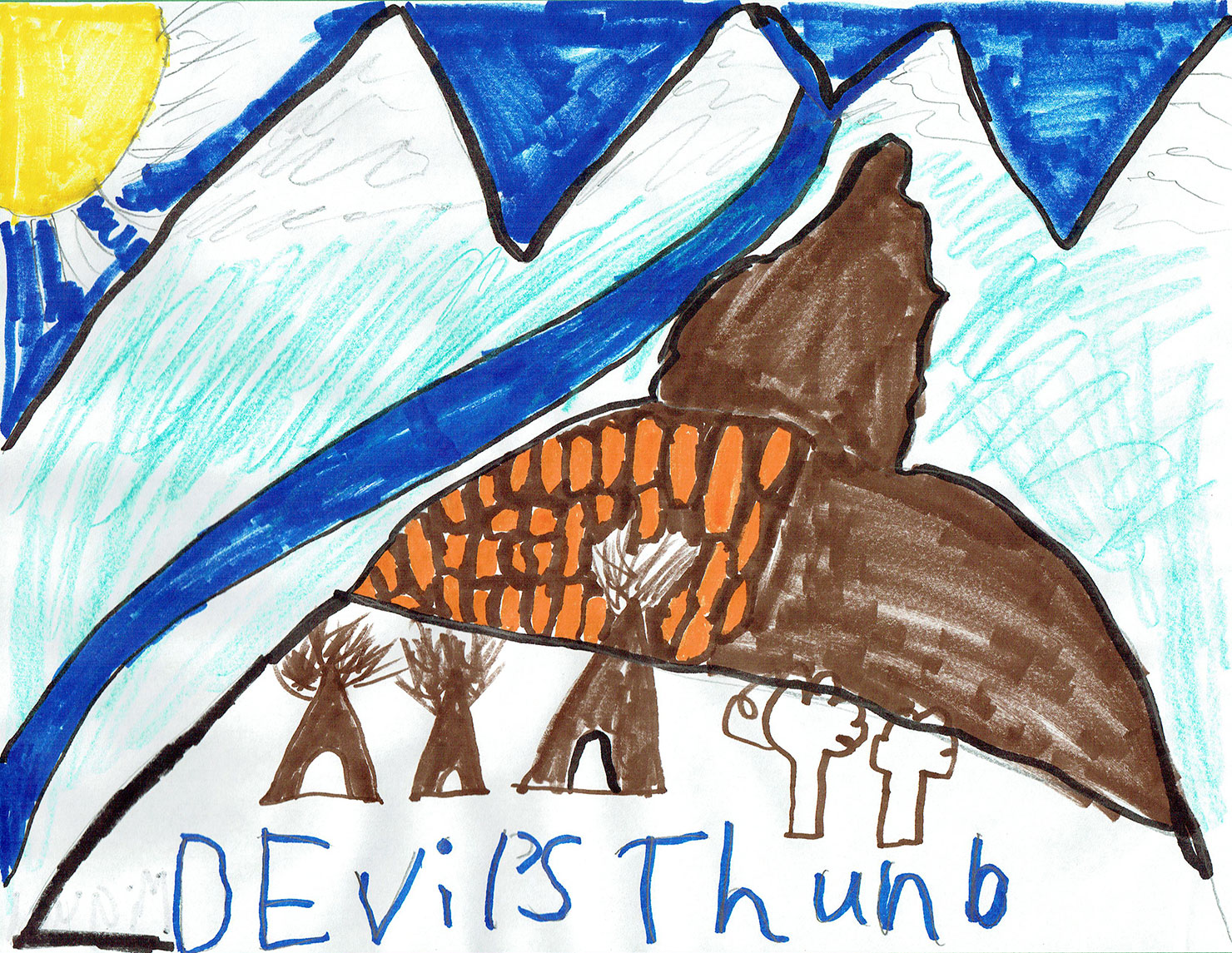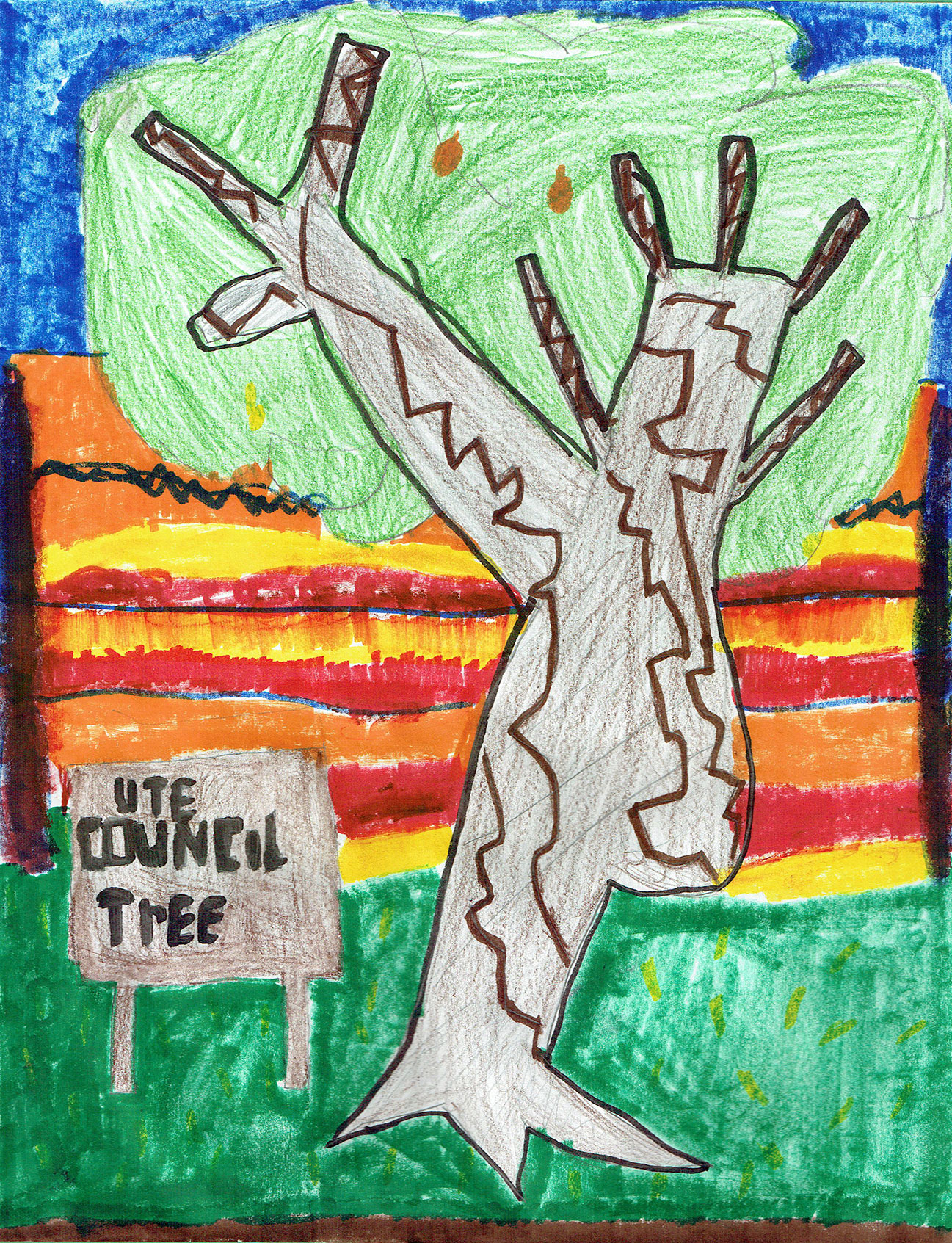6th annual LCB Art and Literacy contest winners
KINDERGARTEN
“Garden of the Gods, Kissing Camels”
By JadaRae Paserio-Lopez
Southern Ute Indian Montessori Academy
FIRST GRADE
By Brynlee Burcham
Ignacio Elementary School
SECOND GRADE
By Miguel Red
Southern Ute Indian Montessori Academy
THIRD GRADE
“Ute Council Tree”
By Leandra Litz
Southern Ute Indian Montessori Academy
FOURTH-FIFTH GRADE
“Stinky Water”
By Tallias Cantsee
Southern Ute Indian Montesorri Academy
MIDDLE SCHOOL
“Garden of the Gods”
By Madison Hollingsworth
Bayfield Middle School, 7th grade
_____________________________
FOURTH – FIFTH GRADE WINNER
“Stinky Water”
By Tallias Cantsee – Southern Ute Indian Montessori Academy
Filled with hope
Relaxing waters
Amazing waterfall
Hot pools healing me from pain
River slowly going by
Creator who made this place
Shooting stars at night
When I see the stars I pray –
For me being here, for the people who are hurting, for you who are reading this I’m thankful for the hot springs.
I will pray for your loved ones.
______________________
MIDDLE SCHOOL WINNER
“Garden of the Gods”
By Madison Hollingsworth – Bayfield Middle School – 7th Grade
“My people feel our spiritual way of life started here … This is where we resided; this is where our elders grew up.” -Alden Naranjo – historian & member of the Mouache band of Southern Ute Tribe. (Denver Post)
Long before settlers, with a history dating back 12,000 years, the Ute Indian Tribe lived and traveled vast lands of the Great Basin. Originally comprised of 7 bands (Mouache, Caputa, Weenuchiu, Tabeguache, Grand, Yampa, and Unitah), the Ute Indians would travel and split into smaller groups to make the difficult task of hunting and gathering food easier (w3.dl l.org). Through their travels, the Ute people came across a site that would forever hold special place in the heart of the Southern Ute tribe. Below Pikes Peak, in the town of Colorado Springs, Colorado, there lie grand formations of 300 million year old red rock, known today as Garden of the Gods; And to the Southern Ute Tribe, the Garden of Eden (Impression Evergreen).
Although this national natural landmark was more recently named Garden of the Gods in August of 1859, by two surveyors who were exploring the surrounding area, the Ute people have had physical and spiritual ties to this site with evidence of existence dating back 3,380 years (Wikipedia). Annually, they would gather and camp there during the fall/winter months and indulge in festivities, storytelling, and would even arrange marriages. The Ute people even claim to have ancestors buried there, thus the importance of their spiritual ties (Impression Evergreen).
During these harsh times of early existence, efficient hunting and gathering was a crucial part of survival. With basic tools made of stone and wood, men would hunt large game (elk, deer, and antelope) while the women harvested and gathered wild plants and roots along with smaller game. Their harvest consisted of wild plants and fruits such as amaranth, wild onion, rice grass, dandelion, sumac, chokecherry, prickly pear cactus, wild raspberry, gooseberry, and buffalo berry. Their root harvest consisted of sego (mariposa) lily, yellow pond lily, yucca, bear root, Indian onions, and Indian carrots. They made use of any resource they could, including harvesting the inner bark of ponderosa trees for medicinal and healing purposes. The Ute people would pride themselves with their central values and their close relationship with nature (History of the Southern Ute). Although existence during these times were rough, things became easier for the Ute during the 16th and 17th centuries, when they acquired the horse. However, with the good came the bad. In the 18th century and early 19th century trappers and traders began to cause conflict and invade Ute land. (w3.dl 1.org)
These pioneers discovered this land was abundant in natural resources such as water, wood, and precious metal such as gold and silver. Once this became the focus of the newcomers, the Ute soon found themselves in a losing battle for the land they called home. During this time, many treaties and agreenents were made and broken. Finally in 1874, the Brunot Treaty was ratified and the Ute’s land was fraudulently taken away. This treaty not only took their homes away, but also their annual harvests. Towards the end of the 19th century, the reservation for the Southern Ute was created- A strip of land reaching 15 miles wide and 110 miles long, which would be divided and shared amongst tribal and non-tribal citizens. Today, the Mouache and Caputa make up the Southern Ute tribe of Ignacio, Colorado and its surrounding land. With approximately 1,400 tribal members, this group bands together and calls this place “home”. However, they will never forget their spiritual roots and the Garden of the Gods.














